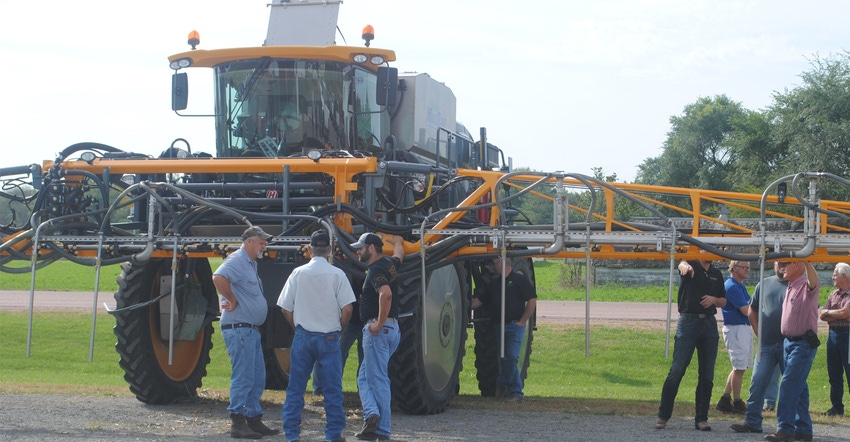June 1, 2021

In a site-specific crop management course at the University of Nebraska-Lincoln, professor Viacheslav Adamchuk (we referred to him simply as Slava) said, “Precision agriculture will eventually just be called ‘agriculture.’”
I am well over a decade removed from college now, and the precision component of the term has steadily been absorbed into agriculture. As a result, the marked improvements that we’ve adopted have lost their luster. We do not feel the awe that we felt the first time we saw the new planter component or the new strip-till implement with the multi-bin cart.
These new best management practices and technological advancements have become prevailing to the point that we ought to look backward to remind ourselves, and others who are distanced from production agriculture, just how important these advancements have been to the quality of our lives and resources.
Today, I am a crop consultant and general manager of the Agronomic Consulting Group, serving clients in Nebraska, Kansas, South Dakota and Iowa. I also am an alum of LEAD Class 37.
In my position, variable-rate application seems to be the most discussed and the most noted advancement in production agriculture, and it is something that we take for granted — the ability to variable-rate anything, essentially any input.
Seed can be planted at different populations in areas that can be defined by nearly any feasible attribute, or set of attributes — anything from the basics like soil type or dryland vs irrigated to the more complex, such as historical yield stability zone.
Fertilizer can be applied in ways that maximize crop response across a number of attributes as well. We can use equations that take into consideration yield goal, soil fertility, soil characteristics and fertilizer type.
Advancements in equipment
Advancements in application equipment are allowing us to variable-rate apply micronutrient products at the sub-ounce rate with sub-centimeter precision, and conversely, we have the ability with advancements in scales to variable-rate apply manure and other high-volume soil amendments by the ton to areas that precisely accommodate regulatory setbacks.
Swath control for planters, sprayers and other applicators have reduced overlap, overapplication and off-target application by significant amounts.
The list goes on: pivot-irrigation technology to apply variable rate by span or by degree, planter attachments that allow variable seeding depth, variable-row closing force, variable pressure on dynamic row cleaners and much more.
It should be mentioned that the availability of the technology does not alone warrant its use. The ability to variable-rate essentially any attribute should be approached with both logic and caution. There are many algorithms out there that walk a path leading to weak ground remaining weak, or even getting weaker, rather than weak ground increasing in productivity.
If you identify a weak area in the field and adopt a script that applies less seed, less fertilizer, less care and less effort, then Las Vegas odds would say that it will remain a poorly producing area.
Alternatively, you could consider a reevaluation of your resources and their allocation in order to raise the entire average. Unless your farm could also be defined as a tar pit that swallowed up the dinosaurs, it likely has the ability to produce a cash crop in a profitable manner.
Cover crop boom
Cover crops are maintaining their utility and have been effective in reducing soil erosion and weed suppression. In the more Southern states that have a longer growing season, covers have also been effective at moving nutrients deeper into the soil profile.
Hardly a new technology, but still notable, glyphosate has been a significant component in the cover crop system. Without it, using rye as a cover crop would require a much different approach. Glyphosate remains an extremely effective termination method for rye and other cover crops that do not adequately winter-kill.
We live on a section of the world, the Great American Midwest, that is the envy of global production agriculture. It contains land so productive that wars have been fought in order to possess it. Our American ag producers understand the importance of stewardship in multiple senses — the stewardship to ensure production tomorrow as well as the stewardship of legacy.
It is astonishing that so many folks, distanced from production agriculture, can believe that producers would be so shortsighted as to not maintain and nourish our own golden goose. We are truly blessed to live where we live. It may seem simple, but it is a most magnificent gift to be able to enjoy the fruits of labor.
Schmidt is a graduate of LEAD Class 37.
You May Also Like




